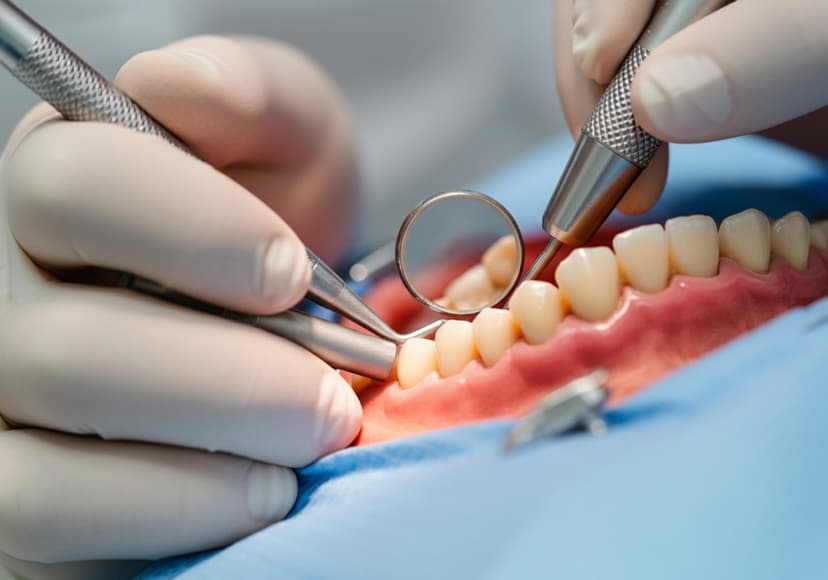4 Dental Implant Procedures
Dental implants offer a permanent tooth replacement solution. They restore function and aesthetics.

Research topics
Missing teeth can significantly impact your quality of life, affecting everything from your confidence to your ability to eat comfortably. Fortunately, advancements in dental technology have made tooth replacement more accessible and effective than ever before. One increasingly popular approach involves the use of four dental implants to support a full or partial arch restoration. This blog post delves into the intricacies of these procedures, exploring the different techniques and helping you understand what might be the best option for your individual needs. We'll be covering four implant treatment methods, also known as quad implant dentistry, and addressing the topic of teeth replacement with four implants using procedures using 4 implants.
Understanding the All-on-4® Technique
The All-on-4® technique is arguably the most well-known approach to 4 dental implant procedures. This innovative method involves strategically placing just four implants – two in the anterior maxilla (upper jaw) and two in the posterior maxilla, angled slightly to leverage existing bone density – to support a full arch of replacement teeth. This is a significant advantage for patients with insufficient bone density in the posterior region, as it often eliminates the need for extensive bone grafting procedures. The result is a fixed, full-arch prosthesis that looks and functions remarkably like natural teeth. For a more in-depth look at the All-on-4® procedure, visit this comprehensive guide.
The All-on-4® method offers several key advantages: reduced treatment time compared to traditional methods requiring more implants, less invasive surgery, and often a lower overall cost due to fewer implants. However, it's crucial to consult with your dentist to determine if it's the right solution for your specific case. Not every patient is a suitable candidate. The success of the All-on-4® technique relies heavily on proper diagnosis, meticulous surgical placement, and a well-fitting prosthesis.
All-on-4 Variations and Customization
While the basic All-on-4® concept is fairly straightforward, it's important to understand that it’s adaptable to individual circumstances. Dentists might modify the technique based on factors like the patient's bone quality, existing teeth, and desired aesthetic outcome. Some variations might involve using different implant angles or adding additional implants for increased stability. A thorough consultation is crucial to outline a personalized treatment plan based on your specific needs and expectations. The precise positioning of the four implants is key to the long-term success and stability of the final restoration.
Alternative Four-Implant Approaches
While All-on-4® is popular, it's not the only game in town. Other four implant dentistry approaches exist, offering tailored solutions for different clinical situations. For example, some patients may benefit from a modified approach where the four implants are positioned differently depending on the bone structure and the location of missing teeth. This customization ensures optimal support and stability for the prosthetic teeth. The goal is always to create a functional and aesthetically pleasing smile that improves the patient's quality of life.
Furthermore, the use of four implants isn't limited to full-arch restorations. In certain cases, four implants might be strategically placed to support a partial arch restoration, effectively replacing several missing teeth without the need for a complete full-arch prosthesis. The specific placement of the four implants will depend on the patient's individual requirements. A detailed assessment of the patient's oral health and jawbone structure is necessary before deciding the most suitable approach.
Understanding the Procedure: From Consultation to Completion
Regardless of the specific four implant treatment methods chosen, the process generally involves several key stages: an initial consultation and assessment, including diagnostic imaging (CBCT scans are often used), surgical implant placement, a healing period, and the final placement of the prosthetic teeth. This entire process requires meticulous planning and execution, ensuring the long-term success of the procedure. Consider reading a detailed explanation of the procedure at this helpful resource.
The surgical placement of the implants is a precise procedure performed by experienced oral surgeons or dentists skilled in implant dentistry. Post-surgical care is equally important, requiring diligent adherence to the dentist's instructions to ensure proper healing and prevent complications. The healing period allows the implants to integrate with the jawbone, a process known as osseointegration, crucial for the long-term stability of the restoration. Once healing is complete, the prosthetic teeth are placed, restoring functionality and aesthetics.
Choosing the Right Approach: A Collaborative Effort
Selecting the best approach among the various procedures using 4 implants requires careful consideration of numerous factors. Your dentist will work with you to discuss your needs, evaluate your oral health, assess your jawbone structure, and determine the most suitable treatment plan. Open communication and a collaborative approach are vital to achieving the best possible outcome. Remember, the long-term success of your treatment relies on selecting a highly skilled and experienced dental professional. A guide to help you navigate this decision-making process can be found here.
Addressing Common Concerns and Potential Risks
While teeth replacement with four implants offers numerous benefits, it's essential to understand potential risks and complications. These can include infection, nerve damage, implant failure, and sinus issues (in the upper jaw). A thorough understanding of these risks, as well as their prevention and management, is crucial. Your dentist will discuss these with you in detail, answering any questions or concerns you may have. Choosing an experienced dentist and following post-operative instructions carefully greatly reduces the risk of complications. The process of quad implant dentistry, while generally safe and effective, still needs to be viewed within the context of possible risks that your dentist can discuss and help mitigate.
Long-Term Care and Maintenance
Even with successful implant placement and prosthetic restoration, proper long-term care is essential to maintain the health and longevity of your new teeth. This includes good oral hygiene practices, regular dental checkups, and professional cleanings. By following your dentist's recommendations, you can enjoy your new smile for many years to come. Your investment in 4 dental implant procedures should provide you with a smile that is not only beautiful but also strong and resilient, given proper maintenance and follow-up care.
In conclusion, the field of 4 dental implant procedures offers a range of innovative solutions for individuals seeking to restore their smiles. By understanding the various approaches available, discussing your options with your dentist, and committing to proper aftercare, you can achieve a beautiful and functional smile that lasts a lifetime.
Posts Relacionados

1 Day Porta Potty Rental
Convenient, clean, and temporary restroom solutions for any event. Affordable and reliable rentals available.

14 Things To Look For In An It Managed Services Provider
Managed services providers offer crucial IT support. Consider factors like expertise, security, scalability, and cost-effectiveness when selecting one.

24 Hour Dental Implants Guide
Immediate dental implant placement offers a fast, efficient solution for tooth loss.